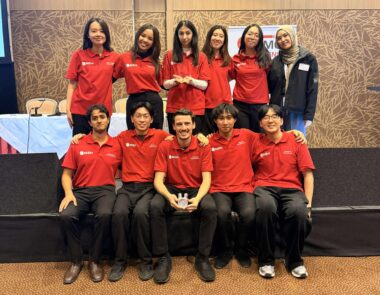Researchers from the School of Chemical Engineering are exploring innovative methods to addressing central nervous system (CNS) disorders.
Central nervous system (CNS) disorders represent an increasing and costly global health concern. Approximately 20 per cent of the Australian population are affected by a brain disease, disorder, or injury such as stroke, Alzheimer’s disease, epilepsy, Parkinson’s disease, cerebral palsy and multiple sclerosis.
Neuropsychiatric and neurological disorders, including Alzheimer's disease, Parkinson's disease, and brain cancers, present challenges to healthcare systems worldwide. Patients with primary brain tumours or brain metastases often have limited treatment options, highlighting the urgency for advancements in CNS treatment.
Medications designed to address CNS conditions face a significant obstacle known as the blood-brain barrier (BBB). This barrier typically prevents around 98 per cent of drugs from reaching the brain, posing challenges to treatment efforts. In response, researchers are now exploring innovative methods to identify medicines that can efficiently travel along the neural pathway, bypassing the BBB.
The research team led by Professor Guangzhao Mao and postdoctoral research fellow Dr Wenqian Wang from UNSW’s School of Chemical Engineering, in collaboration with UNSW medical researchers A/Prof Gila Moalem-Taylor and Dr Vaishnavi Ananthanarayanan, as well as other school collaborators Dr Md Musfizur Hassan, Saluo Lai, Zaheri Mahmud, Dr Jianbo Tang, and Dr Peter Richard Wich, have published their findings in the Small Journal.
Rather than attempting to penetrate the BBB, the team have explored a pathway from nerve endings to the main cell body, enabling medicines to reach the CNS directly. By attaching drugs to nanoparticles and a special protein, the team successfully delivered medicine from nerve endings in rats' diaphragms to the motor neurons in their spinal cords and brainstems.
This innovative approach restored diaphragm function with only a minimal amount of the drug, demonstrating promising results. “Our research takes a different approach to delivering drugs to the brain than most studies. Instead of trying to break through the BBB, we use a special route, already existing in nature, within nerve cells to deliver medicine straight to the brain. This way, we can bypass the barrier and target the brain directly,” Prof Mao says.
“By attaching drugs through a tiny particle linker to a special protein, we were able to send medicine from the nerves in the diaphragm of paralysed rats all the way to their spinal cords and brainstems. This method restored the function of their diaphragms with just a tiny amount of medicine, much less than usual. Without the special protein, the medicine didn't work as well, showing how important it is for targeting the brain.
“Even though our early studies show promise, it's taking time to move to human trials. This is because it's hard to prove how well the medicine travels within the neurons and how effective it is at treating the condition. So, we're looking for ways to test the medicine's effectiveness in cells.
“We've studied how proteins move within cells and recreated neuronal environments in labs to see how different substances, like proteins and nanoparticles, move within neurons.
“The way nanoparticles interact with neuronal cells is crucial for their movement, but we're still not sure how attaching the special protein helps nanoparticles move actively and precisely. Understanding this could help us develop better treatments for brain diseases.”
In future studies, the researchers hope to further develop the microfluidic method to screen a variety of BBB bypassing nanoparticles for their effectiveness in drug transporting and targeting. These sophisticated cell-based assays will accelerate drug discovery towards human trials.
Key Facts:
Researchers find new pathways to better treat central nervous system disorders.
Contact details:
Diana Merlot, Engagement & Communications Officer, UNSW Engineering

